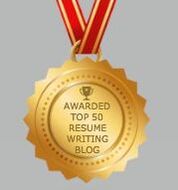Career Reinvention: Making the Most of Your 50s and 60s“It’s never too late to be what you might have been.” — Motivational speaker Les Brown The concept of the traditional career path is changing. With more than 108 million people who are now age 50 or older — and with one in five Americans will be 65 or older by 2030 — the idea of an upwards career path culminating in retirement at age 65 or 67 is evolving to “second act” and even “third act” careers. As we move forward, a midlife career change is becoming more common. There are countless stories of successful midlife career changes:
There are also numerous examples of musicians and actors who have reinvented themselves over the years to appeal to new generations of fans. Among them: David Bowie, Phil Collins, Tony Bennett, Henry Winkler, Robert Downey Jr., and Drew Barrymore. These people are reminders that you always have the power to make a change and become the person you always wanted to be — the person you were meant to be. The years between 40-60 are generally considered to be “peak earning years,” as full-time workers with bachelor’s degrees generally tend to make the most money during those two decades. As a result, your 50s are the decade in which your income-earning potential can be its highest. But many people feel stuck or uncertain about their future when they turn 50. They may have worked in the same job for many years and are feeling frustrated or bored. They may no longer be challenged by the work they are doing. Or they may have hit a “pay ceiling” — maxing out their salary compensation for the type of work they are doing, without the opportunity for further significant growth. They may have experienced personal changes that are causing them to re-evaluate their professional career. They may have gotten divorced, or experienced the death of a spouse, parent, or loved one. Or their children may have left for college, leaving them with an empty nest. Some are convinced it’s too late to start something new. Some are worried about age discrimination in the job search. None of these are reasons not to reinvent yourself after age 50. Career reinvention at this stage often means finding the intersection of:
Step One: Get in the Right MindsetSome people see 50 as the “beginning of the end,” and they begin thinking about how to step down the corporate ladder as they approach retirement. Others see the milestone as a reset button and start making new plans about how to make their remaining working years the best time possible. Take some time to reflect on your life and career. What did you want to be when you grew up? What were you passionate about? Did life get in the way of you achieving some of your dreams? Next, decide what you want. Set a specific goal for professional development. If you believe that you can achieve it, you can. Don’t talk yourself out of what you are capable of achieving. Just because you haven’t achieved it yet doesn’t mean it isn’t possible. Be aware of negative thoughts and self-sabotaging behavior. You also need to adopt a growth mindset. You have to believe that you are capable of change and that any failures you encounter are not “who you are.” A growth mindset means you believe in your ability to become better. Acknowledge the fear of leaving your comfort zone. Make a list of the challenges and roadblocks you will likely encounter and develop a plan for tackling them. For example: If you are a long-time teacher who is considering a career change to the corporate world as a learning and development coordinator, one of the biggest challenges might be learning new technology (in particular, a specific L&D software/platform). Your plan might be to research the most common L&D platforms and identify courses or online training to learn the technology. Step Two: Decide on a DestinationReview your reflections and goals from step one and decide what you want to do next. Do you want to move up within your current industry or profession, or make a complete change? What will reignite your passion? For inspiration, look at people you know and the changes they’ve made. Is there a defined path you can follow? For example, it’s not uncommon for lawyers to move into a judge role in their 50s. Some advertising executives start their own agencies in their 50s or move from an agency into a corporate role. Sometimes money becomes less of a motivator later in your career, and you might decide to leave a stressful corporate role for a smaller business, startup, or even a nonprofit. (Although making this kind of move doesn’t necessarily need to lead to a pay cut, it can sometimes result in lower pay in exchange for a better work/life balance.) You may also be seeking a change because you’re no longer able to physically do some of the things you’ve always done in your career. Are there ways you can use your skills, knowledge, and experience in a less physically demanding job in the same profession? Or would a complete career change be a better fit? For example: If you’re a furniture warehouse manager who works in the field alongside employees, but your body is feeling the aches and pains from hauling heavy items up and down stairs, you might consider using your staffing, logistics, and operations knowledge in a less “hands on” role. Step Three: Create Your Career PlanNow that you know where you want to go, it’s time to chart your path and perhaps use a career development planner. In your career reinvention, you may need new skills. For example, you may decide to learn a new language. There are any number of online courses and apps to help you. The most important thing is to pick one and then schedule the time to work through the information. The same is true if you’re considering starting your own business as part of your career reinvention. You will need to research your opportunities. Will you consult or freelance? Will you purchase a franchise? Start a business from scratch? What resources will you need? Create a roadmap to guide you through all steps in the self-employment journey. (And a note about starting your own business in your 50s: While younger startup founders tend to be more technologically savvy and risk-averse, older founders often have more knowledge, business skills, connections, and access to startup capital.) Can you see yourself going back to school? Or pursuing additional training and/or certification. Can you use your hobby to advance your career? Perhaps you enjoy woodworking as a hobby. Could you create custom furniture? Or combine your technology knowledge with your hobby and program CNC machines for manufacturers. Ageism and age discrimination are still a reality, but as the workforce ages and worker shortages continue to be an issue, things may change. Professions that have traditionally had mandatory retirement ages — for example, airline pilots — are loosening some requirements. Some accounting and law firms that had retirement policies that pushed out highly experienced professionals are reconsidering those requirements. Identify employers who support second act and third act careers. For example: Look for companies that have Certified Age Friendly Employer (CAFE) status and use sites such as agefriendly.org/jobs to identify possible age-friendly workplaces. Step Four: Baby StepsA drastic change isn’t necessarily the best way to start. Instead, consider baby steps. If you’re considering a career change, investigate the new profession thoroughly. Learn how to ask for informational interviews and begin conducting informational interviews. You may also want to “shadow” someone who does what you want to do, to make sure you really understand what’s involved in the new role. Considering quitting to start a business? Pursue it as a side hustle first. If you are able to, build up the business so that you’re replacing at least 50 percent of your income before you quit your job (with a plan to get to 100% or even 125% once you’re able to dedicate your full attention to the venture). Also, be aware if your current employer has restrictions on outside employment. And don’t dial back your effort at work as you think about making a change. Identify skills or knowledge you don’t have — and find people to fill those gaps. For example, if you are a writer (but not a numbers person), you can get assistance with bookkeeping and tax preparation. Never owned a business? Find a mentor or business coach. Be mindful of your finances. If you decide to take a pay cut as part of your career reinvention, consider that carefully in light of your overall financial goals. Remember, a pay cut isn’t always needed to improve your work/life balance. For example: Many consultants are able to make more with self-employment (even considering expenses, taxes, and saving for retirement yourself) than when they worked for someone else. Step Five: Make Room for Personal GrowthIn many cases, career reinvention is about balancing personal and professional growth. To continue moving forward, it’s important to reflect and appreciate all the good things that have happened in your life. Reflect on your successes. Let go of the disappointments. You may have poor self-esteem, a lack of self-confidence, or a negative mindset. Consider professional help for tackling long-unresolved issues or negative patterns in your career. If you’ve been fired from more than two jobs in the last five years, look at the reasons why and see if there is a common issue. Maybe you have unrealistic expectations of your co-workers or bosses, or maybe you’re finding yourself in employment situations that aren’t a good fit for your skills or experience. In step one, we talked about having a growth mindset. Your professional growth will benefit from improving your overall knowledge. Keep your brain sharp by committing to creativity, self-development, and constant learning. Exercise your brain and your body. Engage in activities related to organization, memorization, and decision-making (learning a new language ticks all three boxes!). Other activities to consider include:
10 Actions For Career ReinventionWith these five steps in mind, it’s time to take action. These 10 actions will help move you forward towards your goal of career reinvention.
“You are never too old to set another goal or dream a new dream.” – C.S. Lewis There is no better time than right now to start your career reinvention. About the AuthorMandy Fard is a Certified Professional Resume Writer (CPRW, CMRW) and Recruiter with decades of experience in assisting job seekers, working directly with employers in multiple industries, and writing proven-effective resumes. |
Categories
All
powered by Surfing Waves
AuthorMandy Fard is a Certified Professional Resume Writer (CPRW, CMRW) and Recruiter with decades of experience in assisting job seekers, working directly with employers in multiple industries, and writing proven-effective resumes. Archives
July 2024
|
-
Greater Los Angeles
and Kern County
-
[email protected]
.




 RSS Feed
RSS Feed



